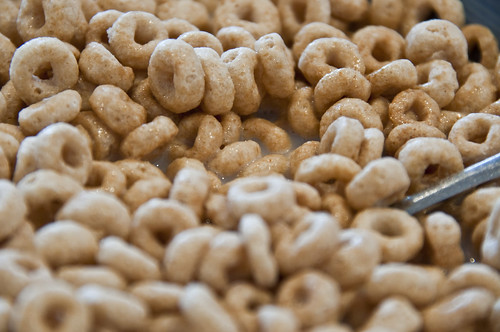There is so much talk about sugar in our diet–especially added sugar. I think that people are unaware of just how much sugar they are consuming. It seems to me that in most cases, all sugar is thought of as “bad” and that individuals neglect to realize that some of our most loved and commonly consumed foods, such as yogurt, fruit and even milk (lactose anyone?) contain sugar. What we are really trying to control is our added sugar.
Added sugar refers to the sugars that are added to–not naturally found in–a product. Think frosted flakes…an innocent corn flake is obviously coated with added sugar (the “frosting”). So what do we already know about added sugar? It digests fast, which adds to diabetes risk since it also raises our blood sugar quickly and makes work for our insulin. We also know it can contribute to weight gain because, among other things, it doesn’t fill us up and makes it likely we will overeat. But what about our brain and concentration? Does added sugar have a direct impact on our ability to think clearly and process information?
Scientists at UCLA have looked into the impact of sugar on cognitive function. According to their research, a diet high in fructose does appear to interrupt our ability to learn and remember information. It’s important to note here that naturally occurring fructose, which is found in our fruit, remains a nutritious choice, as it is high in antioxidants, fiber and other micronutrients. Added, unnatural fructose sugar, however, (such as high fructose corn syrup) appears to have this negative impact on our brain. Luckily, the same group of researchers found that supplementing with omega-3 (DHA) supplements enhanced brain function and countered the negative impact of the added sugar. This makes sense since DHA has been found to improve cognitive function and memory. It still appears, however, that it is best to limit the added sugar in our diet to begin with.
What about our children? If we are struggling to reduce the added sugar in their diet should we just aim to supplement with DHA? It appears that may be helpful, but when it comes to the diets of our children, we are still better off seeking foods that offer as little added sugar as possible. Naturally, this means dropping the soda and other beverages. According to a CDC report released last February, however, a majority of the added sugar our children are consuming is coming from food not drinks. Interestingly, the same report also found that more added sugar is consumed in the home, not while at school or other places. Possibly this is because highly advertised products like Nutella (21 grams of added sugar) sneak into the house. Or that we don’t realize that products like barbecue sauce are high in added sugar (11 grams). This highlights our need to learn how to shop for better foods to bring home to our family (and the need for the Guiding Stars program, which will help you quickly identify foods with less added sugar).
Here are a few commonly consumed foods that contain added sugar and some terrific alternatives…

- Pass on…Regular Peanut Butter, 3 grams: Go for…Natural Peanut Butter (3 Guiding Stars), 1 gram
- Pass on…Honey Nut Cheerios (1 Guiding Star), 9 grams: Go for…Regular Cheerios (2 Guiding Stars), 1 gram
- Pass on…Vanilla Non-fat Greek Yogurt, 13 grams: Go for…Plain Non-fat Greek Yogurt (3 Guiding Stars), 7 grams
- Pass on…Raisin Bran Crunch (1 Guiding Star), 19 grams: Go for…Kashi Go Lean Crisp Toasted Berry Crumble (2 Guiding Stars), 10 grams
- Pass on…Blue Diamond Almond Breeze Vanilla Almond Milk, 15 grams: Go for…Blue Diamond Almond Breeze Unsweetened Vanilla Almond Milk (1 Guiding Star), 0 grams
Even with Guiding Stars on your team, it is still important to learn how to read the ingredient list and identify products that offer little added sugar. Choose foods that don’t list added sugar as a main ingredient and avoid cereals, granola bars, etc. with more than 5 grams of added sugar (this is noted on its own line on the nutrition facts panel, below total carbohydrate–scroll down for information on added sugars).